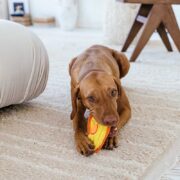Regular enrichment is essential for a healthy, happy dog. Studies have shown that dog enrichment can reduce stress, prevent boredom, and lessen unwanted behaviors by providing both physical and mental stimulation.
These kinds of interactive activities fill a void for dogs left alone at home throughout the day, and for dogs confined to kennels in stressful environments like animal shelters.
Dog enrichment isn’t limited to puzzle toys, a peanut butter-filled Kong, or a trip to the dog park, though. There are five types of dog enrichment that work separately and together to improve behavioral health and overall quality of life:
- Social
- Nutritional
- Occupational
- Sensory
- Physical
Learn how dog owners can incorporate each type of enrichment into your dog’s life and how it can ensure the wellbeing of your furry friend.
Social Enrichment
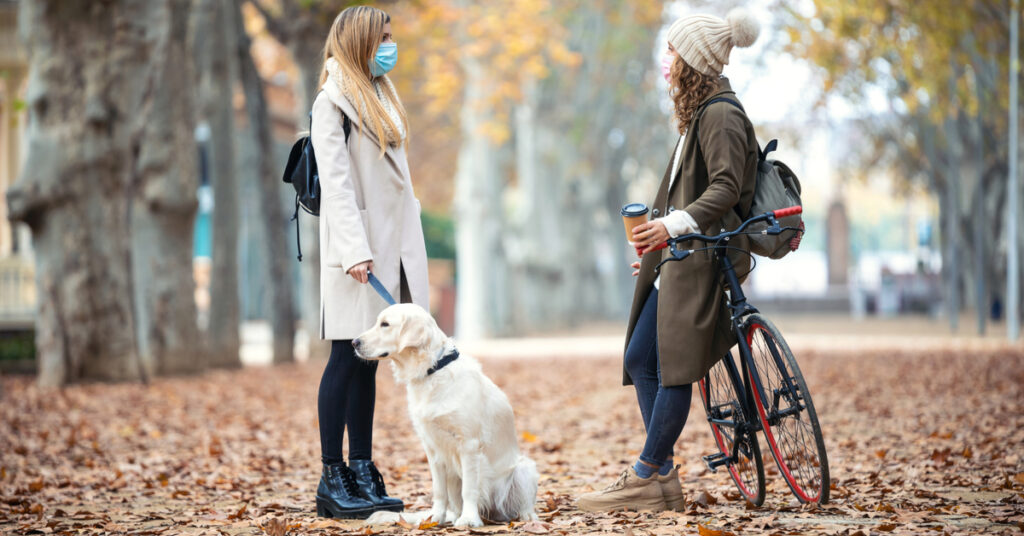
Dog parents have most likely heard that socialization is one of the most important practices you must do with new puppies. Social enrichment includes contact with other species like adult humans, cats, children, objects, as well as other dogs. It exposes dogs to new people, places, and situations where they can learn and grow.
Well-socialized dogs are less likely to become fearful, aggressive, or overstimulated later in life when exposed to these things.
Social enrichment activities can include:
- Supervised playgroups
- Daily walks
- A visit to a dog-friendly brewery, bar, pub, or cafe
- A trip to the pet shop
- Going to the park or beach
- Taking a jog/going on a run
Any activity that exposes your dog to other dogs, individuals, and groups of people in different environments qualifies as social enrichment.
Nutritional Enrichment
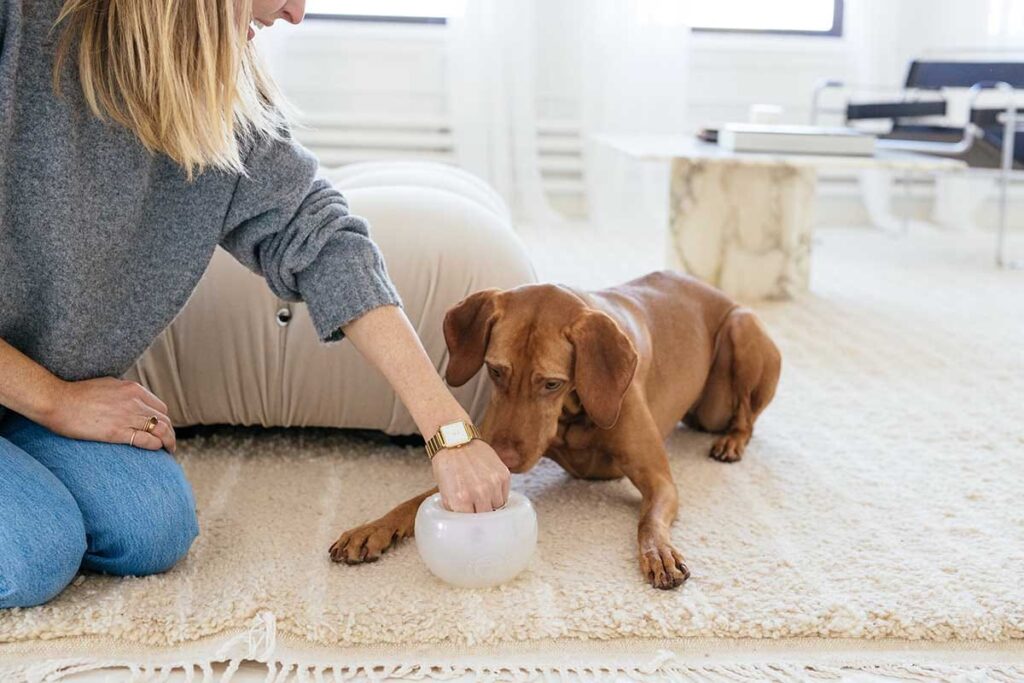
Nutritional enrichment requires your dog to use its natural scavenging and foraging instincts to seek out and earn tasty rewards. A dog can practice nutritional enrichment through puzzle toys, snuffle mats, and ‘sniffaris’.
Puzzle toys in particular combine the reward of food with physical and mental stimulation, helping to decrease unwanted behavior by acting on the dog’s natural instincts. According to Ohio State University’s Veterinary Medical Center, “Studies have shown that puzzle toys increase exercise and reduce barking.”
Nutritional/food-based enrichment activities include:
- Dog puzzles
- Snuffle mats
- Hide treats around the house
- Sprinkle kibble in a rolled-up towel, toiet paper roll, or cardboard boxes
- Putting treats in a muffin tin covered by tennis balls
- Stuffable dog toys/treat-dispensing toys
- Serve dog food out of a slow feeder at mealtime
If your dog isn’t highly food-motivated, use extra-high-value treats your dog won’t be able to resist. You could try human food like peanut butter (without xylitol), plain chicken breast, or cheddar cheese. The stinkier, the better.
Occupational Enrichment
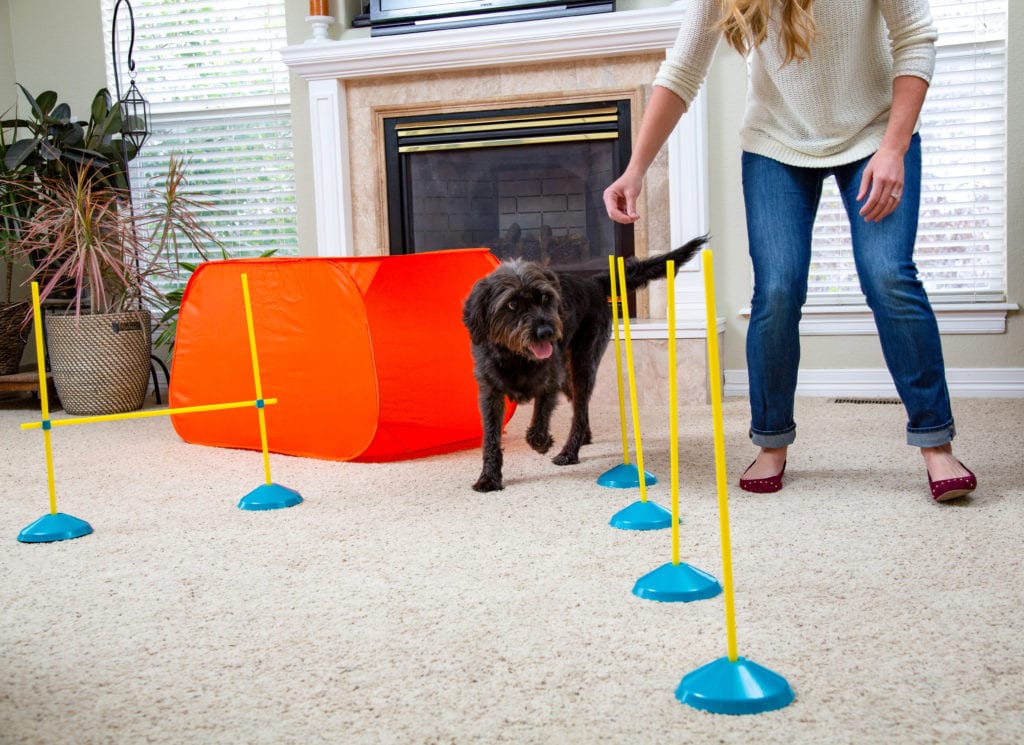
Occupational enrichment gives dogs a “job” to do, which is especially important for working breeds like herding dogs. Researchers at Purdue University explain that occupational enrichment “… helps keep dogs mentally stimulated, which combats boredom while also allowing them to release excess energy.”
Occupational enrichment activities include:
- Dog sports and agility
- Puzzle toys that make them work for food
- Dog training
- Playing fetch
- An outdoor dig pit
Job-related enrichment makes your pup use cognitive thinking and problem-solving skills in order to accomplish a task.
Sensory Canine Enrichment

Sight, sound — and especially smell — play a large part in canine enrichment. Stimulating your dog’s senses can be very beneficial for anxious or stressed dogs.
Sensory dog enrichment includes:
- Looking out the window
- People watching
- Playing soothing music
- Calming scents
- Nosework/scent games with dog treats
- Food puzzles
- Hide and seek
- Chew toys
A dog’s sense of smell is crazy powerful. Scents like ginger, coconut, valerian, and vanilla were found to have a calming effect on shelter dogs in one study. Researchers Dr. Tamara Montrose and John Binks exposed dogs to cloths scented with ginger, coconut, vanilla, and valerian. The dogs exposed to these cloths became less anxious, barked less, and slept more.
Physical Enrichment
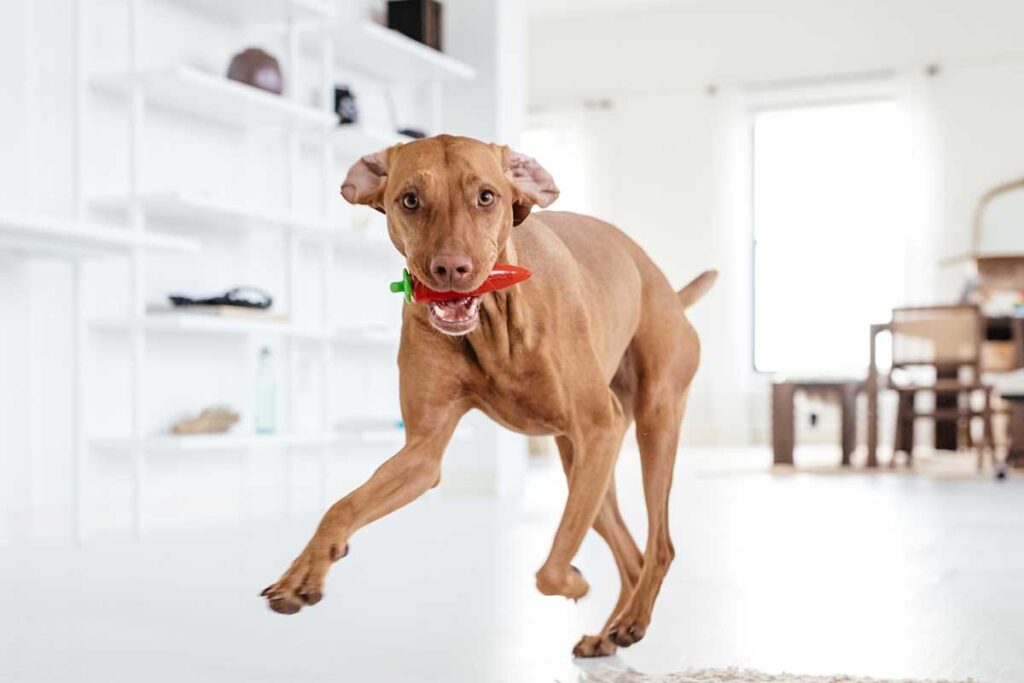
Last but not least: play! Playing fetch, a game of tug of war, and having a consistent rotation of interesting dog toys will provide your doggy with the physical stimulation it needs.
Combining mental with physical exercise your dog loves each day provides a positive way to reduce destructive behavior or stress. Take your dog on a hiking trail, toss a ball on the beach, or just snuggle up on the couch with a soft blanket.
Dog Enrichment Ideas

Enrichment activities and brain games can help your dog build confidence and keep your dog entertained. Try out the above activities to learn what your dog enjoys most.
Next, we’ve provided which toys, puzzles, and other pet products that can provide each type of enrichment for your dog. You can also get some ideas from our blog post on DIY enrichment solutions, The Best Dog Enrichment Toys & DIY Solutions for a Well-Behaved Pup.
Items for Social Enrichment
Add some occupational enrichment in the mix with a dog pack Fido can wear during social outings.
Dog Toys for Sensory Enrichment
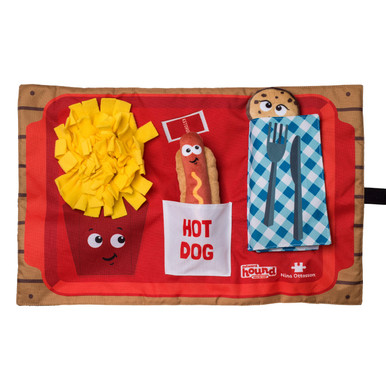
Activity Matz Fast Food Fun Dog Puzzle Mat, Multi
Outward Hound Activity Matz are fun to use, easy to clean, and perfect for both mental and physical exercise. The Fast Food Fun activity mat comes with optional closures to level up the challenge! Once your dog has sniffed out the treats or kibble from the plush material, increase the challenge by placing food in the pockets and hiding them under an extra layer by stuffing in the hot dog. For an even…
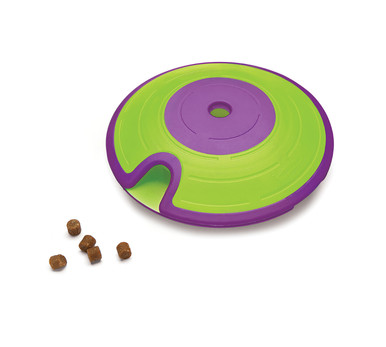
Treat Maze Interactive Puzzle Dog Toy, Green
The Nina Ottosson by Outward Hound Treat Maze is a level 2 game perfect for pet owners needing an enticing solo game to reduce destructive behavior and boredom for their pups. Great for pups who have mastered level 1 games and are ready for an added challenge! This brightly colored dog puzzle game is easy to fill with treats and can be shaken to release the scent in case you pup hasn’t already noticed! The…

Hide A Llama Plush Dog Toy Puzzle, Multi
Outward Hound’s hide and seek plush dog puzzle was designed specifically to eliminate boredom, encourage positive play, and feed your dog’s natural hunting instincts. 2-in-1 interactive play means double the fun with options to play fetch or hide and seek to keep your dog mentally-stimulated. Bound to become your curious canine’s new favorite, our plush hide and seek line of puzzle toys are perfect for…

Orbee-Tuff Planet Ball Treat-Dispensing Dog Toy, Medium
Rated a top product by numerous magazines and called the “world’s best dog ball” by industry experts, the Orbee-Tuff Ball is what put Planet Dog on the map! This durable and bouncy dog toy is made free from BPA, lead, and phthalate with materials that you can trust. An ideal fetch and chew toy with Natural mint oil infused to help freshen your dog’s breath as they chew and play. Available in multiple sizes…
The Planet Ball is mint-scented!
Dog Toys for Occupational Enrichment
Something to fetch, dodge, and forage.
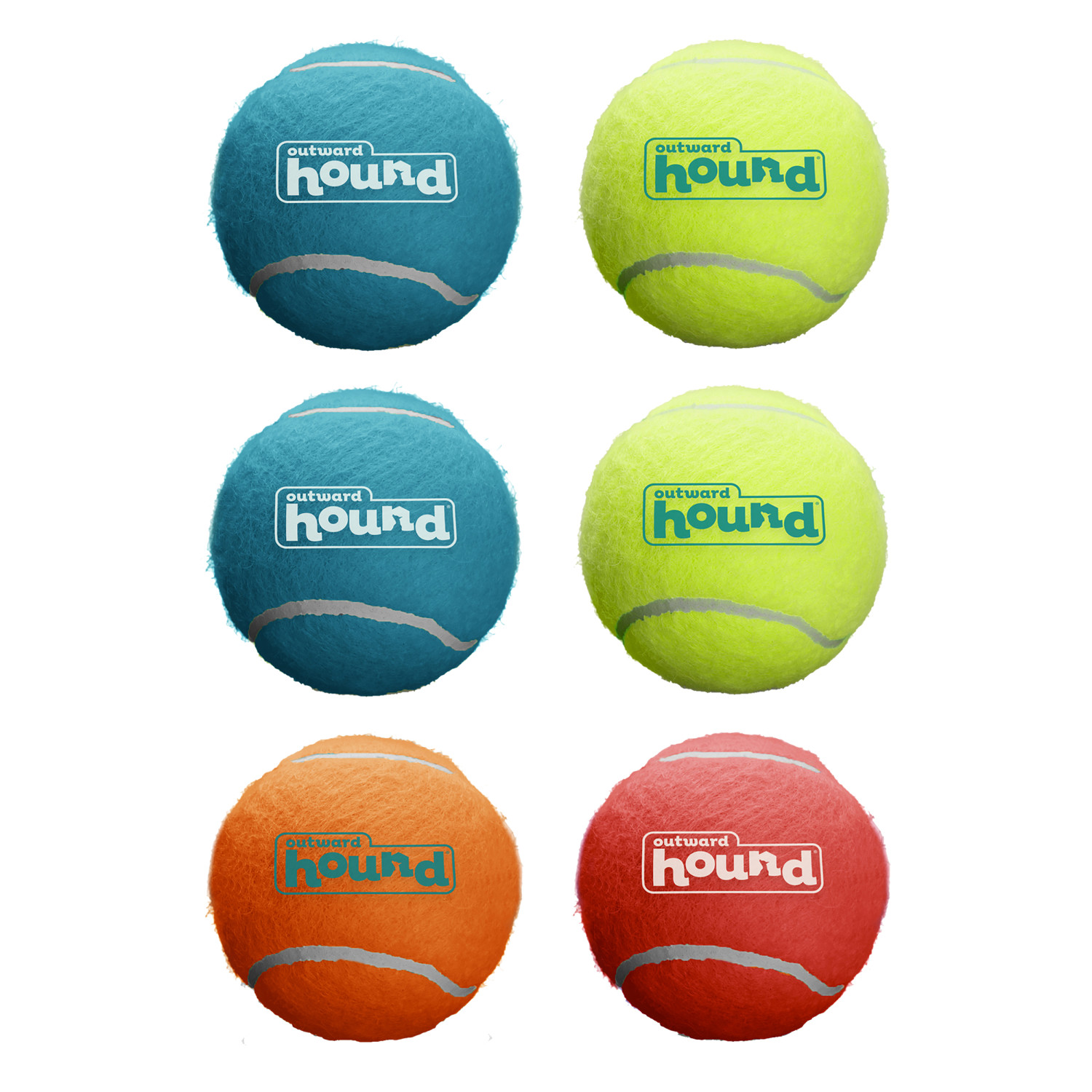
Squeaker Ballz Squeaky Tennis Balls, Medium
Outward Hound Squeaker Ballz are a new twist on the classic tennis ball! These brightly colored, multi-sized balls are made with premium rubber so that the bounce doesn’t end before the games are done. Your pup will love fetching this squeaky tennis ball whether playing indoors or enjoying the great outdoors. Squeaker Ballz come in multi-packs of 2,4,6,& 8 making them a great addition to families with one…
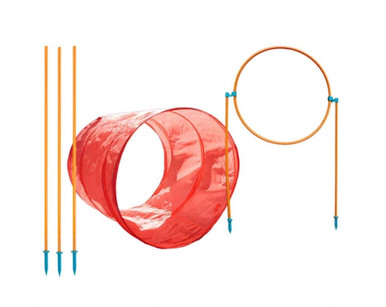
Zip & Zoom Outdoor Dog Agility Training Kit for Dogs, Multi
The Zip & Zoom Outdoor Agility kit challenges your dog’s I.Q. and provides physical exercise with fun! This set is great for training your dog to learn new tricks or commands with an easy to set up obstacle course. This outdoor training set features one circular collapsible tunnel, six weave poles, and an adjustable jump with hoop that come in a slim carry case.OUTDOOR PHYSICAL EXERCISE: This Zip & Zoom…
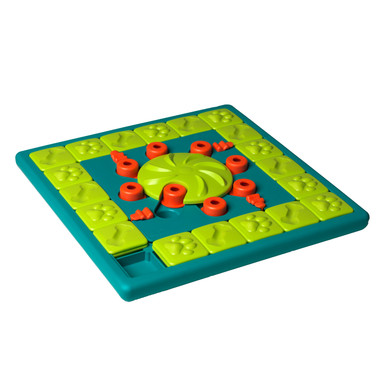
MultiPuzzle Interactive Dog Treat Puzzle Toy, Blue
The Nina Ottosson by Outward Hound MultiPuzzle level 4 interactive dog puzzle toy will keep your dog entertained for hours as they use their natural hunting skills to seek out the hidden treats! Your pups’ favorite dog treats or kibble can be hidden in the outer and central compartments by sliding the puzzle pieces and let the games begin! This puzzle is ideal for dogs who have already mastered levels 1-3…
Physical Enrichment: Calming Dog Beds, Agility Courses, and Active Dog Toys
Whether your dog needs a safe space to rest or room to play, these items should do the trick.
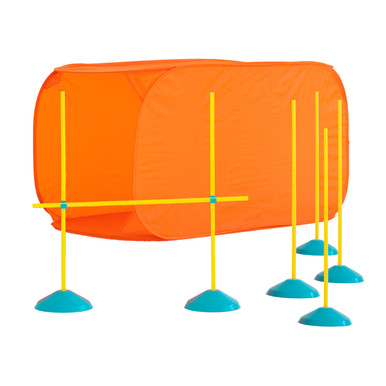
Zip & Zoom Indoor Dog Agility Training Kit for Dogs, Multi
The Outward Hound Zip & Zoom Indoor Agility Kit is an interactive way to keep your dog both mentally and physically active while indoors! Great for use in teaching your dog new tricks and commands as well as just for pure fun. The kit features a training booklet, one square collapsible tunnel, four weave poles, and an adjustable jump that can be taken apart and used as two more individual weave poles…

Tail Teaser Dog Wand Lure Toy
Lure in the fun with Outward Hound Tail Teaser dog wand! Whether your existing lures are worn out or you’re looking to switch up the style, this replacement piece keeps the fun going. Compatible with the Tail Teaser dog training wand, the replacement attaches easily by looping the two ropes together; no tools required! Squeaky sounds keep dogs interested, while the faux fur body triggers dogs’ prey drive…
Flirt poles are the cream of the crop when it comes to physical enrichment and working that prey drive.
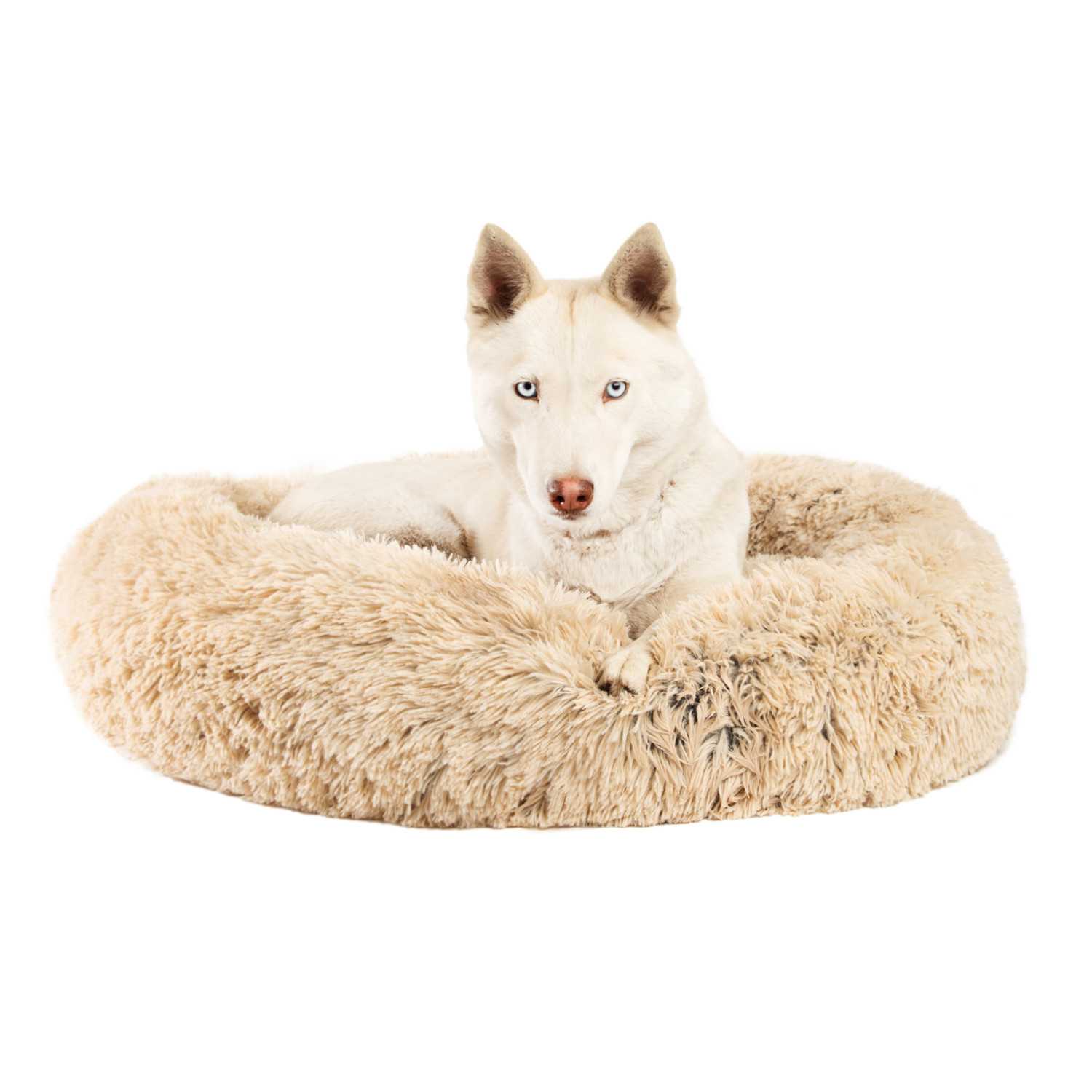
The Original Calming Donut Shag Cat & Dog Bed
Give your pet more than just a dog bed! Best Friend’s by Sheri is the original creator of the most popular dog bed that has surfaced the internet in recent years: The Calming Donut Dog Bed. This innovative cuddler shag design provides better sleep, supports joints, and offers a calming, self-warming effect. The donut cuddler is carefully crafted with durable, vegan nylon and filled with AirLoft fibers,…
Nutritional Enrichment Games: Puzzles, Slow Feeders, Treat Stuffers, & Dog Treats
The following mental enrichment items make your dog work for a reward using its natural foraging instincts.
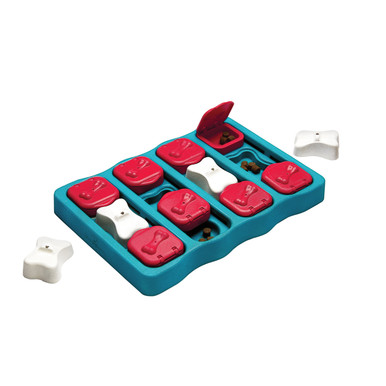
Dog Brick Interactive Treat Puzzle Dog Toy, Blue
The Nina Ottosson by Outward Hound Dog Brick level 2 puzzle dog game will keep your dog entertained for hours as they use their natural hunting skills to seek out the hidden treats! This toy comes with 3 easy-to-fill compartments to hide your dog’s favorite treats and snacks in. Flip lid compartments open up to reveal the first compartment and can also slides to reveal a hidden second compartment…

Orbee-Tuff Mazee Interactive Puzzle Dog Toy
Planet Dog’s Orbee-Tuff Mazee is engaging, rewarding, and fun! This interactive dog puzzle toy is great for bored pups who need a rewarding brain teaser or to encourage slower eating habits in fast eaters. The tinted and pliable Orbee-Tuff TPE shell design is combined with the plastic inner maze to entice all your dog’s senses! Cleaning is simple and fast. Just fill the ball with warm water and…
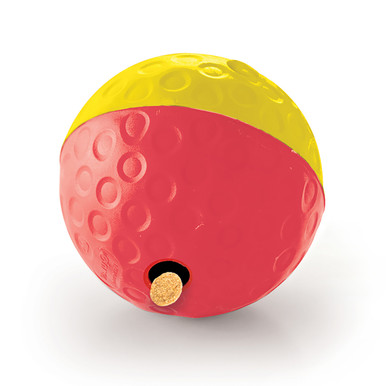
Treat Tumble Interactive Puzzle Dog Toy, Red, Large
The Nina Ottosson by Outward Hound Treat Tumble is a perfect puzzle ball for any pup! A level 1 treat-dispensing dog puzzle, the Treat Tumbler will keep your dog intrigued as they roll the ball and sniff around to find ways to release the reward. Easy to fill with two treat-dispensing holes. Made with food safe BPA-free plastic that is easy to wipe clean for outdoor and indoor fun!BEGINNER’S PUZZLE…
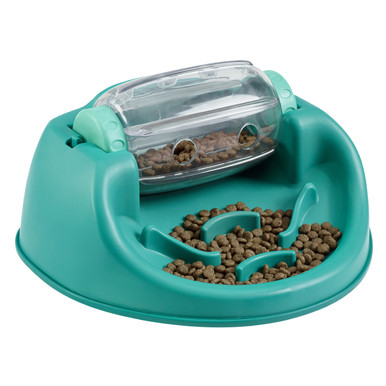
Dog Spin N’ Eat Puzzle, Green
Make mealtime fun and exercise your dog’s mind by replacing your standard dog bowl with a puzzle feeder! The Dog Spin N’ Eat dog puzzle holds up to 2 cups of food. It keeps dogs busy by encouraging your dog to work on their problem-solving skills. The mental workout from this level 2 dog food puzzle feeder fights boredom and extends mealtime, giving them the mental stimulation they crave. It’s easy to use!…
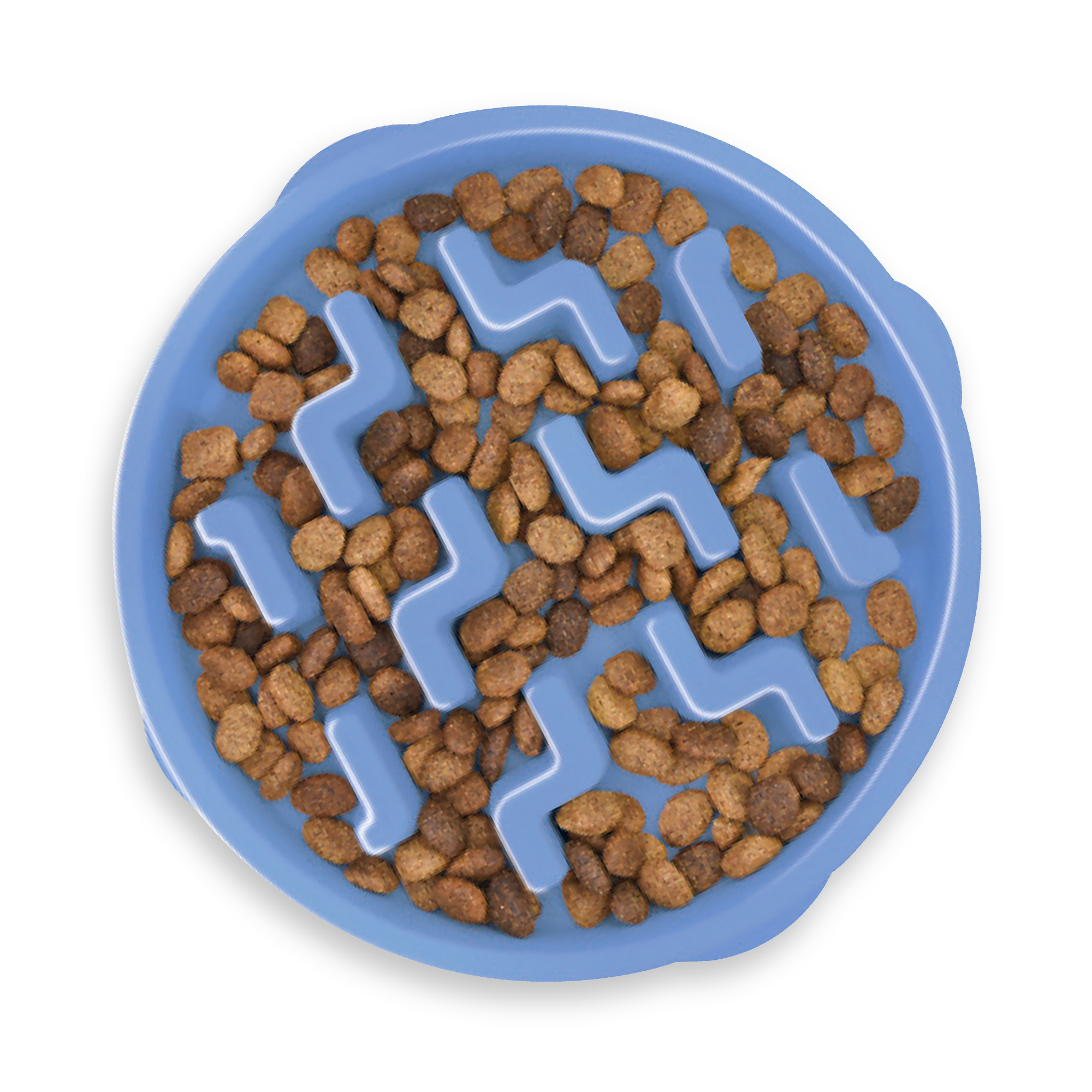
Fun Feeder Slo Bowl, Slow Feeder Dog Bowl
Why do dogs feel like eating is a race? We’re not sure, but we solved the problem anyway. With meal-lengthening ridges, deep grooves, and challenging mazes, Outward Hound Fun Feeder Slo Bowls keep pups engaged for up to 10x longer at chow time. By creating a fun, healthy eating pace, our slow feeders help reduce obesity and bloat and improve your dog’s digestion for happier, healthier pups…
You’ll need some tasty treats, too!

Sweet Potato Chews Dog Treats
At Wholesome Pride, our mission is to create a better, healthier, treat—using 100% real ingredients. That’s why we work with farmers around the world to sustainably source and produce delicious and nutrient-rich treats made with farm fresh ingredients. We don’t use any artificial or unnatural preservatives, artificial colors, or fillers in our dog treats, which make them a perfect snack for pups with…
 Chewy
Chewy Amazon
Amazon
